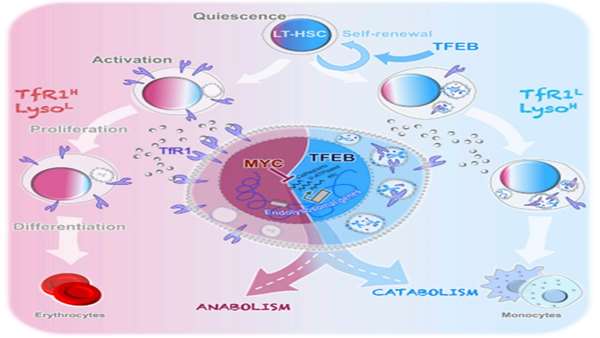It is critical to understand how human quiescent long-term hematopoietic stem cells (LT-HSCs) sense demand from daily and stress-mediated cues and then transition into bioenergetically active progeny to differentiate and meet these cellular needs. However, the demand-adapted regulatory circuits of these early steps of hematopoiesis are largely unknown. Here we show that lysosomes, sophisticated nutrient-sensing and signaling centers, are regulated dichotomously by transcription factor EB (TFEB) and MYC to balance catabolic and anabolic processes required for activating LT-HSCs and guiding their lineage fate. TFEB-mediated induction of the endolysosomal pathway causes membrane receptor degradation, limiting LT-HSC metabolic and mitogenic activation, promoting quiescence and self-renewal, and governing erythroid-myeloid commitment. In contrast, MYC engages biosynthetic processes while repressing lysosomal catabolism, driving LT-HSC activation. Our study identifies TFEB-mediated control of lysosomal activity as a central regulatory hub for proper and coordinated stem cell fate determination.
//isti.ir/Zaws




ارسال به دوستان